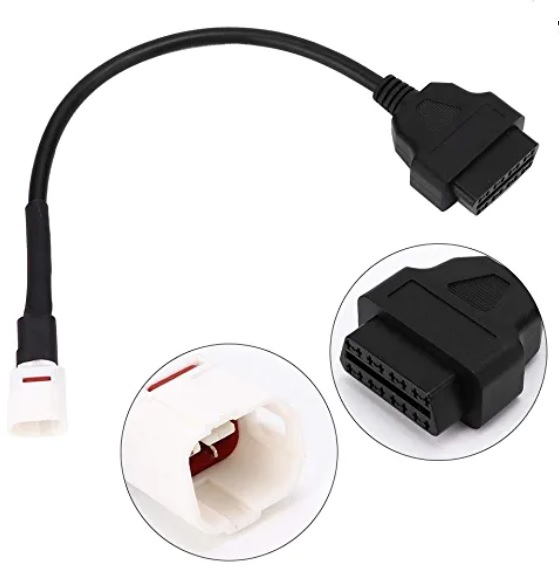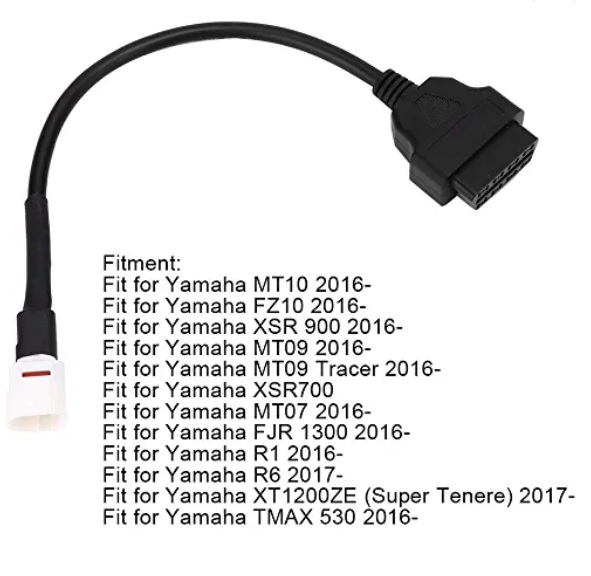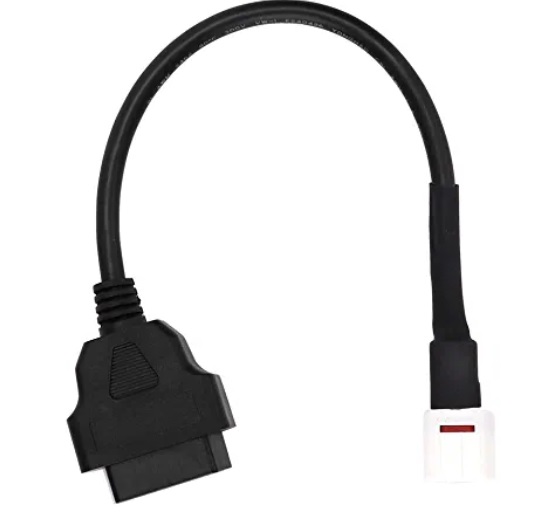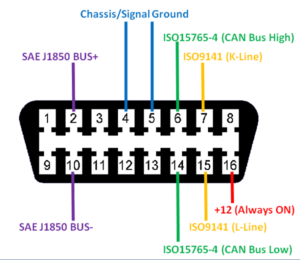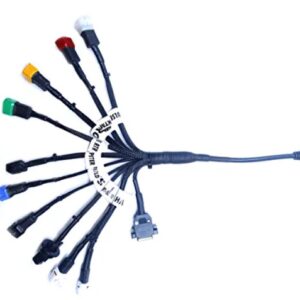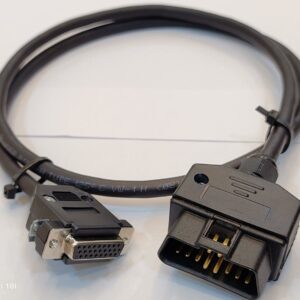Description
Obd2 Diagnostic Cable 4 Pin to Obd2 Diagnostic Adapter Connector Motorcycle Scanner Diagnostic Cable fit for Yamaha
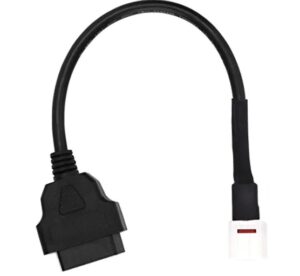
Application Range Suitable for Yamaha. Only obd cable for Yamaha. Premium Quality long lasts for 5 Year Made from FR series Indian Cable, Made In India Compatible with Yamaha scooters and motorcycles (BS 4 and BS 6 type) Support BS 4 and BS 6 bike scanners like ELM327 or gate Supports reading & Clearing fault codes for checking engine lights. (No support for ABS) OBD cables are made for Indian Bikes, from single to multi-brand cables. High Quality Diagnostic adapter is mainly made of ABS plastic and metal, which ensures that it is anti rust, anti acid and alkali, aging resistance and could be used for long time. Good Replacement Made by professional manufacturer, original standard, stable characteristics and excellent performance, Easy to Use It can be used successfully with a simple operation, most suitable choice for you, Service Guarantee Excellent quality Service, fast delivery, simple after sales.
Product description
Specification:
Condition: 100% Brand New
Item Type: Diagnostic Cable
Material: ABS
Fitment:
MT10 2016-
FZ10 2016-
XSR 900 2016- MT09 2016-
MT09 Tracer 2016-
XSR700
MT07 2016-
FJR 1300 2016-
R1 2016-
R6 2017-
XT1200ZE (Super Tenere) 2017-
TMAX 530 2016-
OBD2 Female Connector Mapout24 OBDII:
OBD connector OBD2 Female connector on a car OBD connector (Female) pinout – Also has front view The OBDII 16 pin obd2 connector, diagnostic connector, obd2 scanner specification provides for a standardized hardware interface—the female 16-pin (2×8) J1962 connector. Unlike the OBDII connector, which was sometimes found under the hood of the vehicle, the obd2 scanner OBDII connector is required to be within 2 feet (0.61 m) of the steering wheel (unless an exemption is applied for by the manufacturer, in which case it is still somewhere within reach of the driver). SAE J1962 defines the pinout of the connector as:
OBD2 Female Connector Pinout Configuration:
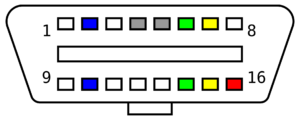
| Pin Number | Pin Name | Description |
| 1,3,8,9,11,12,13 | Blank | These pins are not standard and are vendor-specific. It is also not required for normal communication/interfacing |
| 2 | SAE J1850 Bus+ | This protocol also uses Variable Pulse Width and is normally used by GM vehicles. This is the Bus positive pin of the protocol. |
| 10 | SAE J1850 Bus- | This protocol also uses Variable Pulse Width and is normally used by GM vehicles. This is the Bus negative pin of the protocol. |
| 4,5 | Ground | The ground of the complete system also has the Car including the chassis |
| 6 | ISO15765-4 CAN High | It follows a 2-wire CAN protocol at 1Mbps speed. It also has the CAN high Pin |
| 14 | ISO15765-4 CAN Low | It follows a 2-wire CAN protocol at 1Mbps speed. It also has the CAN low Pin |
| 7 | ISO 9141 – K Line | It follows asynchronous serial communication protocol, tIt also has the Kline Pin |
| 8 | ISO 9141 – L Line | It follows asynchronous serial communication protocol, It also has the L line Pin |
Universal OBD2 Connectors
What Is Universal OBD(Universal OBD2 Female Connector ):
It is also an improvement over OBD-II in both capability and standardization. The OBD Female Connector standard specifies the type of diagnostic connector and its pinout, as the electrical signaling protocols available. It also the messaging format. It also provides a candidate list of vehicle parameters to monitor along with how to encode the data for each. There is a pin in the connector that provides power for the scan tool from the vehicle battery, which moreover eliminates the need to connect a scan tool to a power source separately.

